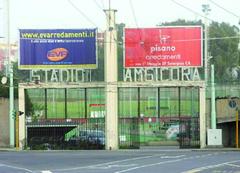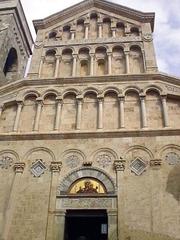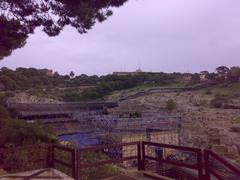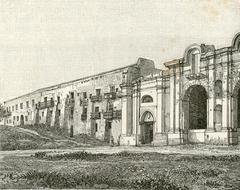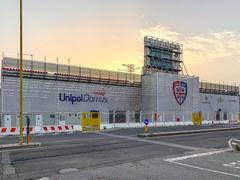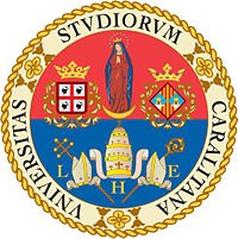
Palazzo Regio: Visiting Hours, Tickets, and Historical Sites in Cagliari
Date: 04/07/2025
Introduction
Palazzo Regio, also known as the Royal Palace or Palazzo Viceregio, is an architectural and cultural jewel at the heart of Cagliari’s Castello district in Sardinia. With a history spanning over six centuries, it has served as the seat of viceroys, a royal residence, and, today, a vibrant cultural and administrative center. The palace’s evolution—marked by medieval, Baroque, and neoclassical transformations—mirrors the political and artistic changes that shaped Sardinia. This guide presents essential information about Palazzo Regio visiting hours, ticketing, tours, accessibility, and nearby attractions, ensuring a rich and well-informed visitor experience.
For official updates and additional visitor details, refer to credible sources such as the Cagliari tourism portal, Monumenti Aperti, and Wikipedia.
Table of Contents
- Introduction
- Historical Overview
- Artistic and Architectural Highlights
- Visiting Palazzo Regio: Practical Information
- Visitor Experience and Amenities
- Frequently Asked Questions (FAQ)
- Conclusion & Recommendations
- References
Historical Overview
Origins and Early History
Palazzo Regio’s story begins in the late 13th and early 14th centuries during Pisan rule, when it was established as a fortified administrative residence. Following the Aragonese conquest in 1337, it became the official seat of the viceroy, cementing its role as Sardinia’s political heart under Aragonese, Spanish, and later Savoyard governance (Wikipedia, cagliari.italiani.it).
Architectural Evolution
Medieval Roots
The palace’s earliest architecture features robust stone walls and defensive elements, typical of Pisan and Aragonese strongholds (Wikipedia).
Baroque and Neoclassical Changes
Major transformations occurred in the 18th century after Sardinia’s annexation by the House of Savoy in 1720. The grand staircase, built in 1730 by Piedmontese engineers, and a redesigned western façade (completed in 1769), introduced Baroque grandeur and neoclassical elegance (cagliari.italiani.it, Monumenti Aperti).
19th and 20th Century Adaptations
With Italian unification, the palace became government property, serving as the Prefecture and later the Province of South Sardinia’s headquarters. Modernizations preserved its heritage, especially after WWII (cagliari.italiani.it, nomads-travel-guide.com).
Historical Significance
Seat of Power
For centuries, Palazzo Regio was Sardinia’s political center, hosting viceroys and vital administrative offices (cagliari.italiani.it).
Royal Residence in Exile
During the Napoleonic Wars, the Savoy royal family resided here in exile, making Cagliari the de facto Sardinian capital (Wikipedia).
Symbol of Sardinian Identity
The palace embodies Sardinian autonomy and culture, housing frescoes of historic milestones like Eleonora d’Arborea’s Carta de Logu (cagliari.italiani.it).
Notable Events and Figures
Palazzo Regio hosted viceroys from Aragon, Spain, and Savoy, with portraits in the Sala dei Ritratti. During the Savoy exile, it was home to King Vittorio Emanuele I and his family, whose presence enhanced the palace’s cosmopolitan character (Wikipedia, cagliari.italiani.it).
Artistic and Architectural Highlights
Exterior
The palace’s Baroque façade features decorative pilasters, intricate stone carvings, and a grand entrance with Italian and Spanish motifs, all set against golden Sardinian limestone (Monumenti Aperti, Medium). Its hilltop location offers sweeping views over Cagliari and the Gulf of Angels.
Interior
- Grand Staircase: Restored to its original splendor, adorned with sculpted lions.
- Reception Halls: Soaring ceilings, marble floors, and gilded mirrors set a regal tone (IslaGuru).
- Hall of the Viceroys: Portrait gallery showcasing Sardinian rulers (Pineqone).
- Royal Apartments: Notably Maria Cristina’s suite, with preserved 18th- and 19th-century décor (Monumenti Aperti).
- Throne Room: Centerpiece of Savoy grandeur with ornate chandeliers and ceiling frescoes (Medium).
- Decorative Arts: Baroque and Rococo frescoes, French-inspired tapestries, and original period furnishings.
Visiting Palazzo Regio: Practical Information
Visiting Hours & Ticket Prices
- Standard Opening: Tuesday to Sunday, 9:00 AM – 7:00 PM (last entry 6:00 PM)
- Closed: Mondays and public holidays
- General Admission: €8
- Reduced Admission: €5 (EU citizens aged 18-25, seniors 65+)
- Free Entry: Children under 18, residents of Cagliari, first Sunday of each month Tickets can be purchased at the entrance or online (Monumenti Aperti, Cagliari Tourism).
Guided Tours & Accessibility
- Guided Tours: Available daily, often in multiple languages including English, Italian, Spanish, and French. Advance booking is recommended (cittametropolitanacagliari.it).
- Accessibility: Ramps and elevators provide access to most areas; assistance can be arranged for visitors with disabilities.
Travel Tips
- Visit in spring or autumn for milder weather and fewer crowds (Guide to Europe).
- Wear comfortable shoes due to uneven historic flooring.
- Dress respectfully, especially if also visiting religious sites (Savoring Italy).
- Photography is allowed, but avoid flash and tripods unless permitted.
Visitor Experience and Amenities
Location
Palazzo Regio is centrally located at Piazza Palazzo, 1, within the Castello district, close to other major attractions such as the Cathedral of Cagliari, Bastione di San Remy, and Antico Palazzo di Città (Guide to Europe). The area is walkable, though steep hills and cobblestones are common.
Facilities
- Restrooms are available on-site.
- The palace’s location ensures easy access to cafés and restaurants in the Castello district.
- Shops often close for siesta between 1:00 PM and 4:00 PM (Savoring Italy).
Accessibility
Some ground-floor areas are accessible; inquire in advance for full access, especially if you have mobility challenges.
Nearby Attractions
- Cagliari Cathedral: 13th-century Romanesque and Baroque masterpiece.
- Bastione di San Remy: Panoramic city views.
- Museo Archeologico Nazionale: Sardinia’s archaeological heritage.
- Antico Palazzo di Città: Historic building with art exhibitions.
- Medieval Towers: Historic fortifications in the Castello district (The Crazy Tourist).
Frequently Asked Questions (FAQ)
Q: What are Palazzo Regio’s opening hours?
A: Generally Tuesday to Sunday, 9:00 AM to 7:00 PM (last entry 6:00 PM). Closed Mondays and public holidays.
Q: How much are tickets?
A: €8 general, €5 reduced, free for under 18, Cagliari residents, and on the first Sunday of each month.
Q: Are guided tours available?
A: Yes, in several languages. Booking in advance is recommended.
Q: Is the palace accessible?
A: Yes, with ramps and elevators. Check ahead for specific accessibility needs.
Q: Can I take photos?
A: Photography is generally allowed, but flash and tripods may be restricted.
Q: How do I reach the palace?
A: Easily walkable from the center; public transport and taxis are available. Limited parking near Castello.
Conclusion & Recommendations
Palazzo Regio is an essential destination for anyone interested in Cagliari’s layered history, stunning architecture, and Sardinian culture. Its transformation from a medieval stronghold to a Baroque palace encapsulates centuries of artistic and political change. With accessible visiting hours, affordable tickets, and multilingual guided tours, it welcomes a broad audience. Enhance your visit by exploring nearby landmarks and planning ahead with official resources. For the most up-to-date information, ticket bookings, and exclusive content, download the Audiala app and follow related cultural channels online.
References
- cagliari.italiani.it
- Monumenti Aperti
- artapartofculture.net
- Guide to Europe
- Wikipedia
- Medium
- IslaGuru
- Pineqone
- Savoring Italy
- The Crazy Tourist
- cittametropolitanacagliari.it
- nomads-travel-guide.com
- amongstromans.com
- Xixerone
- ibnbattutatravel.com






